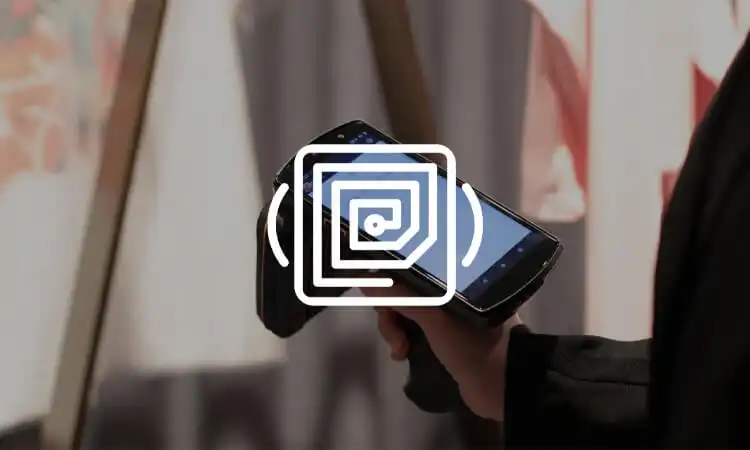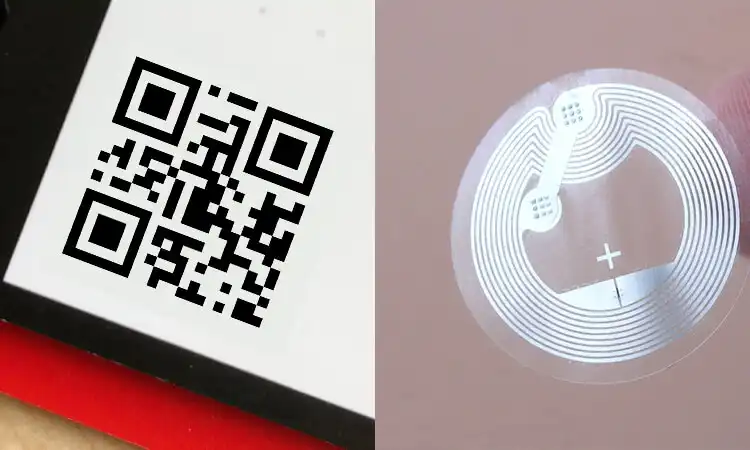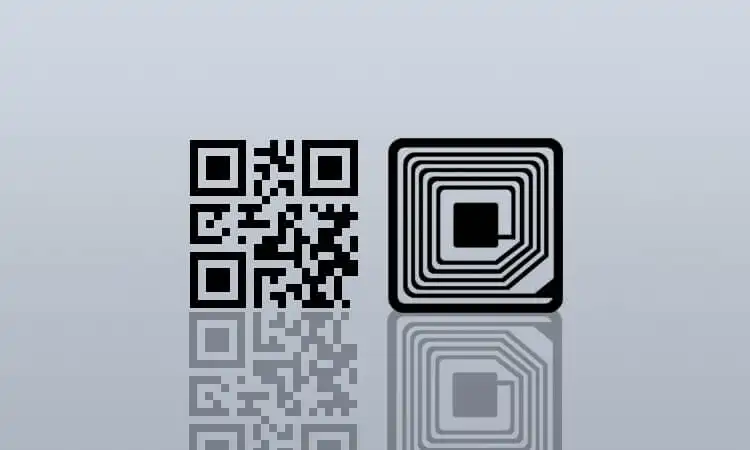Are you struggling to choose QR and RFID tags for your asset management needs? It’s a common technical question that has been around for a while, but the answer isn’t straightforward. The truth is the decision between QR tags and RFID tags depends on your unique use case. To help you make an informed decision, we’ve created a detailed guide that compares the benefits and drawbacks of each technology. Keep reading to discover which one is the right choice for you.
RFID vs QR Code: The Debate
Do you know the difference between a QR code asset tag and an RFID asset tag? While both serve similar purposes, there are some key differences to consider. A QR code is a two-dimensional barcode that requires rescanning each time individually and out of sight. On the other hand, an “active” RFID tag constantly transmits information to a nearby scanner. However, this doesn’t necessarily mean that RFID tags are always the better choice. QR tags are often considered more practical and cost-effective compared to RFID tags, even though RFID tags have more functionality and connectivity. This is because QR tags are easier to print, making them a popular choice for many businesses. Before investing in either technology, it’s important to consider your specific needs and use case to avoid overspending on unnecessary features.
QR Code Overview
What is a QR Code?
QR codes were developed in 1994 to improve product inventory management systems. They function like barcodes but use a square shape that can be read horizontally and vertically. This speeds up loading times, increases data capacity, and improves error resistance. A QR code is a type of barcode that can store information in two dimensions. These include website URLs, product information, and contact details. Marketing and advertising extensively employ QR codes. This is because they provide a quick and easy way for customers to access information about a product or service.

Related Articles: QR Code Labels: How to Use It?
How do QR Codes Work?
QR codes work by storing information using a grid of black and white squares arranged in a square shape. Each square’s position and arrangement represent different characters or data types. When a QR code is scanned using a smartphone or QR code reader, the pattern of squares is analyzed, and the information stored within the code is decoded. QR codes can store much more information than traditional barcodes, which only contain a series of vertical bars.
What can QR Codes be Used for?
QR codes possess immense versatility and can serve various purposes. They’re not just limited to managing product inventory! QR codes are great for business and marketing needs, such as creating digital business cards, promoting social media accounts, sharing images, videos, and PDFs, planning events, etc. Essentially, QR codes can be used whenever you want to provide easy access to digital information. Whatever your goal, QR codes can help you achieve it quickly and conveniently.
Related Articles:
- The Post-Pandemic Role of QR Codes in Social Media
- Museum QR Code: An Innovative Approach to Engage Visitors
- The Rise of QR Codes in Marketing: A Comprehensive Overview
- How to Use QR Codes in Retail: 8 Ways
Benefits of QR Codes
QR codes have become increasingly popular in many industries due to their versatility and their benefits. Here are some of the advantages of QR code technology:
- Accessibility: QR codes are easy to use and can be scanned both digitally and physically, making them accessible to a wider audience. For example, boarding passes can be stored or printed on your phone.
- Contactless: In light of the current need for contactless technology, QR codes are becoming more popular. They are simple to use and can be implemented in businesses of any size.
- Unlimited Space: QR codes have no limit on how much information can be linked to them. This makes them useful for security purposes, such as having a user’s profile on a QR code to identify people accessing buildings or systems.
- Measurable: QR codes can be measured and tracked using programs like Firebase. This is useful for marketing, security, and visitor management purposes.
- Unique: QR codes can be created in endless combinations of patterns, making each code unique. This can be useful for visitor access control, with each new person getting a personalized day code.
- Call to Action: Take advantage of QR codes to offer supplementary information, provide temporary access, or encourage action. They can quickly present more data, making them a great benefit for access control.
Drawbacks of QR Codes
While QR codes have many benefits, there are also some drawbacks. Here are a few:
- Limited data capacity: QR codes have limited data that can be stored in them. This means that a QR code may not be the best option if you need to store a large amount of information.
- Dependence on technology: QR codes rely on technology to be scanned and read, so if the technology fails or is unavailable, the QR code cannot be used.
- Security concerns: QR codes can be easily replicated or manipulated, which can lead to security issues. For example, a malicious QR code could lead to a phishing website.
- Compatibility issues: Some older smartphones may be unable to scan QR codes, limiting their accessibility.
- Aesthetic limitations: QR codes can be unsightly and difficult to incorporate into branding or design.
RFID Overview
What is RFID?
RFID, which stands for Radio-frequency Identification, was originally invented by Charles Walton in 1980. The technology uses radio waves to transmit data, making it an efficient way to track products and inventory.

Interestingly, RFID has a unique history. Its predecessor was actually used as a listening device for the Soviet Union just before the Cold War. Over time, the technology evolved, and in 1973, it was developed into a passive radio transponder with memory for use as a toll device.
As demand grew for better inventory management, a more powerful technology was needed to track individual products. This is where the modern form of RFID came into play and has been used extensively ever since.
Related Articles: Inside RFID Labels: Structure Revealed
RFID is accomplished by attaching an electronic chip to an object to communicate wirelessly. This chip transmits the inventory number to the antenna and then to the RFID reader.
RFID readers can read RFID tags, which use radio waves to communicate with the tags. These readers can be handheld or fixed and integrated with computer systems to store and manage the data collected from the tags. The amount of data that can be stored on an RFID tag varies depending on the type of tag and its intended use, but it is generally flexible and can be customized to suit specific needs.
The data collected from RFID tags can be used for a variety of purposes, including inventory management, asset tracking, and supply chain management. The specific context in which RFID technology is used will determine the type and amount of data that needs to be collected and stored. Overall, RFID technology is widely used in various industries to help businesses improve efficiency.
There are three types of RFID tags: active, passive, and semi-passive. The radio waves themselves power passive RFID tags, while active RFID tags have their own battery and can be read up to hundreds of meters away. Semi-passive RFID tags, also known as battery-assisted passive (BAP) tags, have a small battery that helps extend the tag’s read range.
Related Articles:
- Active vs. Passive RFID Tags: Understanding the Difference
- The True Cost of Active RFID Tags: A Comprehensive Breakdown
- Efficiency Choice: Semi Passive RFID Tags
What can QR Codes be Used for?
RFID tags have many uses beyond just managing and tracking product inventory. They can be added to company cars, computer equipment, and even animals during transportation. With an active RFID tag, you can do even more, like using it for toll collection, making documents machine-readable, tracking the timing of sports events, and simplifying billing processes.
Benefits of RFID
RFID tags offer many benefits that can be applied to most businesses. Here are some of the general advantages of RFID technology:
- Robustness: RFID tags are capable of functioning in more challenging situations than other systems due to their components, design, and size. This makes them useful for a variety of applications, such as pets, theme parks, and security.
- Secure & Simple: Compared to other technologies in the security and access control realm, RFID tags are incredibly simple. The security of the system is ensured, as it only allows access to authorized tags within their designated radius.
- Bulk Scanning: Depending on how RFID is being used, the ability to scan lots of tags in a short time can have many benefits and uses.
- Real-Time Data: The data provided by RFID tags is in real-time and can enhance various aspects of a business, including security, customer interactions, and support. The real-time data can be captured at multiple stages and provide better management, operations, and security opportunities.
- Convenient: RFID readers can scan data instantly and have a broad range of applications in business and people management, unlike other methods. Moreover, RFID technology can read data without requiring a point of reference.
- Remove Human Error: RFID tags and systems are automated and do not require human involvement, reducing the possibility of human errors that can occur with other systems.
Drawbacks of RFID
RFID tags offer many benefits, but they can be expensive. The cost of RFID tags varies depending on your needs. Basic sticky label tags that aren’t durable and have a low read range can cost around 0.05-0.1 USD, but scanners can be costly.
The decision to invest in RFID tags depends on what you’re trying to track and your budget. While RFID tags can do more than QR tags, if you only need to track something that QR tags can handle, it may not be worth spending the extra money on scanners.
Passive RFID tags can be cheaper than active ones, but the same cost issue remains. Passive RFID tags fall somewhere between active tags and QR codes in terms of their applications, which may result in some overlap with the uses of QR codes.
If you don’t need to scan your assets from a distance, in bulk, or without a line of sight, investing in QR tags instead of RFID tags and scanners may be better. This could potentially lead to long-term cost savings for you.
Radio Frequency ID (RFID) tags and Quick Response (QR) codes are two different technologies with some important differences. Here are some significant distinctions to bear in mind:

Read Distance
Depending on the frequency, RFID tags can be read from a few centimeters to over 100 meters away. On the other hand, QR codes need to be scanned directly in front of a reader, like a camera.
Trackability
RFID tags can track logistics, security, and other mobile operations. In contrast, QR codes are static and can only transfer information when manually scanned.
Line of Sight
QR codes require a direct line of sight to be scanned, which can limit some applications. RFID tags don’t require a line of sight, making them more versatile.
Technology
RFID uses radio frequencies, while QR codes use optics (lasers). QR codes are easier to create and may be more accessible for smaller businesses. However, the industry and intended use should be considered when choosing between the two.
Interference
Both technologies can be interfered with but in different ways. QR codes can be obstructed by physical damage or dim phone screens, while RFID can be affected by liquids and metal.
Human management
QR code systems typically require some human management to help users scan codes or ensure the system is running smoothly. RFID systems are often unmanned and automated.
QR vs RFID: Which is Better?
The choice between QR codes and RFID depends on your specific needs and use case. If you need to provide detailed information about a product or service, or if you want to use marketing materials to drive customer engagement, QR codes may be the better choice. QR codes are also more accessible to a wider range of users, as they can be easily scanned using a smartphone or QR code reader.
On the other hand, if you need to track items or products in real time or if you need to manage inventory in a warehouse or supply chain, RFID may be the better choice. RFID tags can be read from a distance, making them ideal for tracking items in large spaces. RFID tags are also more secure than QR codes, as they are difficult to replicate or copy.
Relevant articles: QR Code Test: Everything You Need To Know
Frequently Asked Questions (FAQs)
Q1: What are some common uses for QR codes?
A1: QR codes are commonly used in marketing and advertising, as well as in product packaging and labeling. QR codes can be used to provide detailed product information, access exclusive content, or drive customer engagement.
Q2: What are some common uses for RFID?
A2: RFID is commonly used in supply chain, inventory, and asset tracking. RFID can track items or products in real-time, providing accurate and up-to-date information about their location and status.
Q3: Are QR codes or RFID more secure?
A3: RFID tags are generally more secure than QR codes, as they are difficult to replicate or copy. QR codes can be easily replicated or copied, leading to security concerns.
Q4: Which technology is more cost-effective?
A4: QR codes are generally more cost-effective than RFID, as they are less expensive to produce. However, the cost-effectiveness of each technology depends on your specific needs and use case.
Q5: Can RFID and QR codes be used together?
A5: Yes, RFID and QR codes can be used together to provide a comprehensive tracking and identification solution. For example, RFID tags can be used to track items in a warehouse, while QR codes can be used to provide detailed product information to customers.








